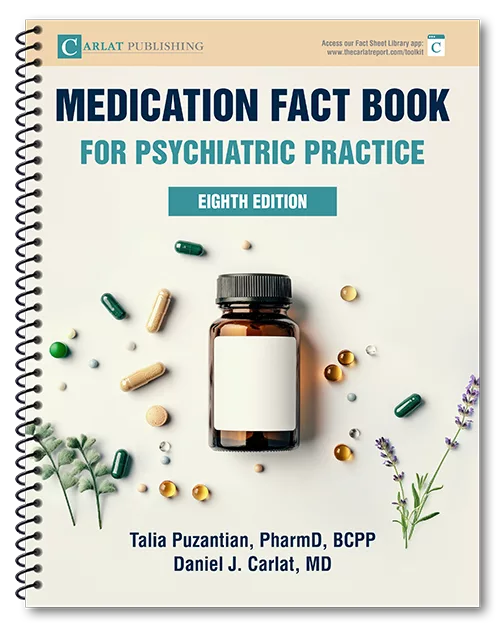Home » Chart Documentation for Suicidal Patients
Chart Documentation for Suicidal Patients
November 1, 2004
From The Carlat Psychiatry Report
Daniel Carlat, MD
Dr. Carlat has disclosed that he has no significant relationships with or financial interests in any commercial companies pertaining to this educational activity.
Psychiatrists, once relatively immune from malpractice lawsuit, are being sued at an increasing rate. Only about 2% of psychiatrists were sued in 1975; this figure increased to 8% in 1995. And most of these suits are for negligence related to suicides.
The figures are not as bad as they look. Most cases never go to trial and are settled quietly between the plaintiff and the insurance company. And of those that do make it to trial, the psychiatrist "wins" 80% of the time. Nonetheless, a lawsuit is a terrible thing, and will put a crimp in all aspects of your professional and personal life.
According to the guru of forensic psychiatry, Robert Simon, most malpractice claims for suicide relate to one of three sources of negligence: failure to correctly diagnose the patient's disorder; failure to adequately assess the patient's suicide risk; and failure to formulate and implement an appropriate treatment plan, including safety precautions (Simon RI, Concise Guide to Psychiatry and Law for Clinicians, 3rd ed. Washington, D.C.: American Psychiatric Publishing Inc.).
Of course, if you do all of those things but don't write them down, the legal system won't give you much credit. Besides, being aware of the importance of what you document may well remind you to take a few extra steps that turn out to be crucial for your patient's safety.
Accordingly, here are TCR's Top Ten List of Things to Document in a Suicide Assessment.
TCR VERDICT: Clinical excellence is great; writing it down, even better
General PsychiatryThe figures are not as bad as they look. Most cases never go to trial and are settled quietly between the plaintiff and the insurance company. And of those that do make it to trial, the psychiatrist "wins" 80% of the time. Nonetheless, a lawsuit is a terrible thing, and will put a crimp in all aspects of your professional and personal life.
According to the guru of forensic psychiatry, Robert Simon, most malpractice claims for suicide relate to one of three sources of negligence: failure to correctly diagnose the patient's disorder; failure to adequately assess the patient's suicide risk; and failure to formulate and implement an appropriate treatment plan, including safety precautions (Simon RI, Concise Guide to Psychiatry and Law for Clinicians, 3rd ed. Washington, D.C.: American Psychiatric Publishing Inc.).
Of course, if you do all of those things but don't write them down, the legal system won't give you much credit. Besides, being aware of the importance of what you document may well remind you to take a few extra steps that turn out to be crucial for your patient's safety.
Accordingly, here are TCR's Top Ten List of Things to Document in a Suicide Assessment.
- Document risk factors. While legal experts acknowledge that knowledge of risk factors does not allow us to predict whether a given patient will commit suicide, the inadequate assessment and documentation of risk factors can be cited as negligent practice in court. Use the SAD PERSONS mnemonic (see "Predicting Suicide" article in this issue) to ensure you don't forget anything. You don't have to make this a separate section of your record; instead, include the information in the relevant sections of your H & P.
- Provide a detailed assessment of suicidal ideation. Simply documenting "No HI/SI/Plan" will not cut it in court. You need to be a bit more painstaking, even at the risk of writer's cramp. If you use Dr. Shea's "CASE Approach" (see his interview, this issue) during your assessment you will end up with a wealth of information about past and present suicidal behavior, and you should document most of it in those patients you judge to be at high risk for suicide.
- Avoid the vague term "suicidal." If you write that your patient is or was "suicidal," this can be interpreted various ways in court. Better to write more specifically, "The patient had suicidal ideation to overdose but decided not to because of his religious beliefs."
- Document the presence or absence of firearms. Since so many completed suicides are accomplished by the use of firearms, you really need to ask specifically about access to firearms in every assessment.
- Document collaborative contacts. Did the patient's spouse tell you that the patient appeared to be behaving rationally at home? Document it, or it didn't happen.
- Document consultations. Did you talk to the patient's therapist? Even if the contact amounted to no more than an exchange of voice mail messages, it's worth documenting.
- Use direct quotes. Nothing beats the power of a quote, usually inserted in the HPI or in the mental status exam. "Sure, I've thought about suicide, but I could never do that to my kids."
- Create a crisis plan. This generally involves providing the patient access to telephone or in-person contact with you and/or a crisis team if the situation worsens, and often involves conveying the plan to friends or family.
-
Use the "safety contract" judiciously. According to Dr. Shea, in documenting safety contracts, it's wise to record three things:
- non-verbal body language (e.g., "good eye contact," "firm hand shake");
- a direct quote (see point #7); and
- why you think the safety contract was useful (e.g., as a deterrent? as a way of gaining more information? as a way of improving the alliance?)
- Beef up your formulation. As Dr. Shea exhorts in his book, "Don't just record what your decision is; record the how and why of your decision-making process."
TCR VERDICT: Clinical excellence is great; writing it down, even better

Issue Date: November 1, 2004
Table Of Contents
Recommended
Newsletters
Please see our Terms and Conditions, Privacy Policy, Subscription Agreement, Use of Cookies, and Hardware/Software Requirements to view our website.
© 2025 Carlat Publishing, LLC and Affiliates, All Rights Reserved.


_-The-Breakthrough-Antipsychotic-That-Could-Change-Everything.webp?t=1729528747)



